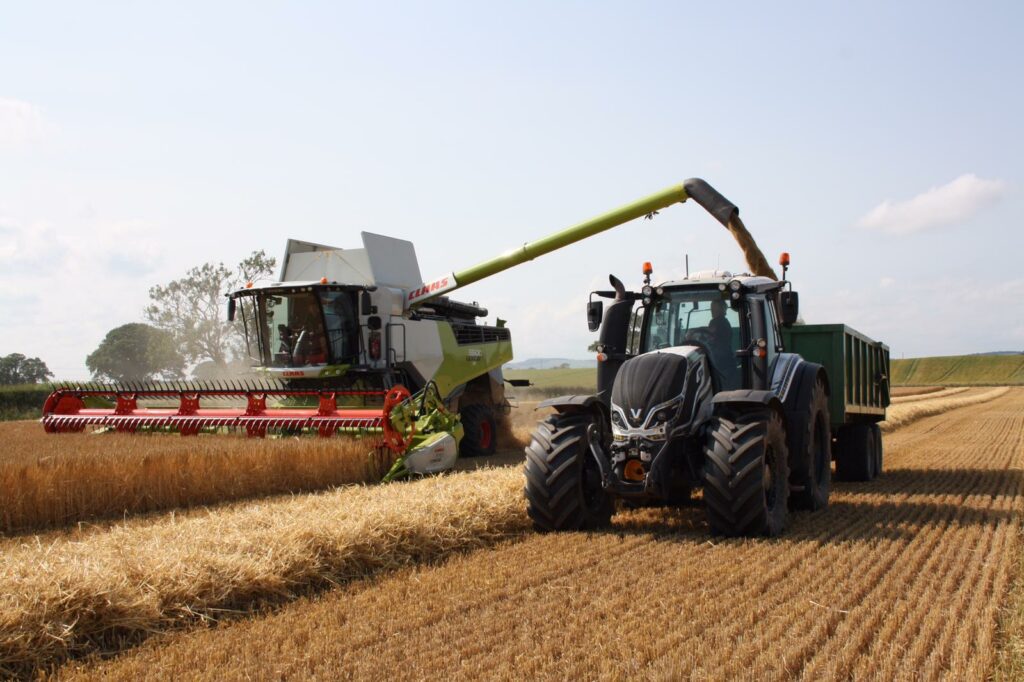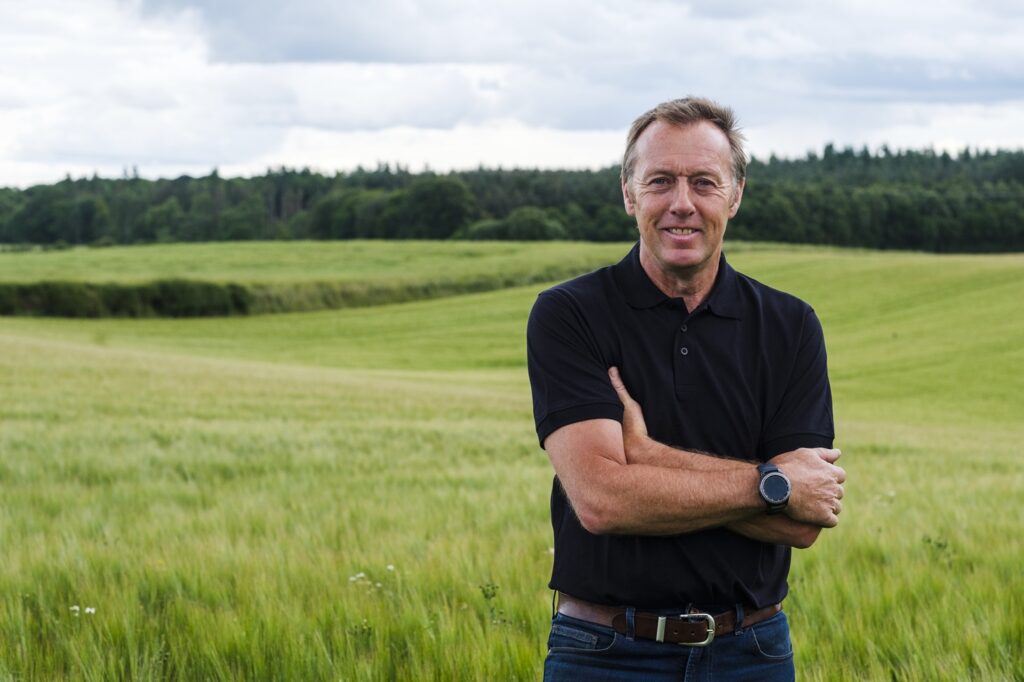My name is Neil White and I hosted the first Covering Soils event for Direct Driller magazine in Scotland. Having written for the magazine for 4 years, it was a pleasure to be asked to be part of their events programme and representing Scotland!
I farm in Berwickshire, just over the border in SE Scotland. I believe it is the best place in the world to do what I do. We have farmed here since 1913 as tenants and owners. We are in the Merse valley, which has good soils varying from sandy loam to clay loam. The area and the soils played its part in me being lucky enough to win Farmers Weekly Arable farmer of 2023, but the biggest change was to my farming system.
2016 and 2017 were good harvests for me and I could have kept the farming system I had, it was working well, yields were good, but I wanted to keep things moving forward so I looked at making changes. I had some extra ground on a CFA and I was struggling in the autumn to cope with the workload on my own. I had used a contractor to plough but I was very keen to keep it all in my domain as timing is crucial.
I first looked on-line at some of the early adopters of direct drilling and strip tillage, the content was good, honest, and really helped me formulate a small list of drills I wanted to know more about. I think the decision was easier in those days as there was definitely less choice, but I believe I would have made the same call in the end. The Mzuri system kept coming up and looked like a good way to enter into reducing tillage for some of my crops. I take my hat off to those who sell the plough and combi drill the day the new drill arrives, that was never my plan and was a step too far for me. I was fortunate enough to have time chatting to some people who ran direct systems. They had mixed fortunes, but they were kind enough to talk to me and explain the pro’s and more importantly, the con’s of their systems. This honesty and generosity are found in the pages of the Direct Driller magazine, and it is another reason why I am proud to be part of it.

At cereals 2017, I asked Mzuri if they would do a demo up here in Scotland and they agreed. 3 months after the demo, I bought a second hand Protil 3T in mint condition. It was an easy decision as the wheat sown on demo straight into OSR stubble looked great all winter. The plan was to direct drill the OSR and wheat after OSR and beans. That was all I really envisaged doing with it. I then changed the plan and sowed spring beans, OSR, some wheat after beans and OSR that year but still ploughing for winter barley, some wheat, spring barley and spring oats. I ran the two systems together for many years slowly finding that the yields, while varied, were the same between direct sown and plough based. It went from 20%DD 80% ploughed in 2018 to 80%DD and 20% ploughed in 2021 to finally 100% DD. The time saving was the main driver at the start, but I soon noticed that my fuel bill and my tractor hours were also down by about 2/3rds. I was able to cover lots more ground on the optimum days, aiding establishment and reducing compaction. The thing I never considered was the improvement in soil health. OM and workability of my soils was always not bad, but I have seen measurable improvements since I changed my tillage. OM is up by over 1%-2% and the soil has that fresh smell again. I have a good rotation which helped, but the soils now, are more even and more resilient than they have ever been. This has allowed me to direct drill all my crops without any prior soil movement. The only pass beforeS sowing is with the straw rake to kill slugs and chit weeds.

In 2019 I changed my original drill to a dual hopper Protil, plus stocks unit, this gave me the option of companion cropping, cover crops and placed fertiliser. I used the pelleter to put clover in with my OSR, and buckwheat and OSR in another field. This trial worked but didn’t seem to protect the OSR or increase the yield. I also now sow over wintered cover before spring oats and spring malting barley. The drill can do 3 different depths in one pass at 11kph, beans down the front leg, radish and phacelia out the coulter and clover from the pelleter. These crops cost money and need proper sowing methods to succeed. I had a beautiful clover underlay for 2 years which produced 2 very big wheat crops and the clover, but I didn’t know what to do with it back then, and I stupidly sprayed it off in year 3. The new drill also gave me the option to vary rates on each tank. I use VR seed now on all cereals and beans, I use VR pellets on my OSR with the same soil map applied to the pelleter motor. This, like the VR seed puts the correct amount in the correct place without using more product. The benefit of the VR seed is very noticeable in the yield mapping.

The final benefit really was by chance. Carbon and (eventually) our new payment scheme in Scotland are the hot topic and many meetings. I have had Mairi Gougeon, our cabinet minister down on my farm and she seemed very receptive to the idea of production and environmental measures running side by side. It now looks like my system could tick many of the boxes without changing things, meanwhile I am increasing my farm output. I believe we must try and maintain or improve output on the good ground in this country while using cover, companion crops, margins, crop rotation, and hedges to encourage biodiversity and wildlife conservation on our farms. Carbon is the market I haven’t entered ‘yet’ but it is something that I have had advice on. My carbon audit gives me very favourable figures to bring to the table, maybe for a 1-year deal at first. I haven’t jumped, but because of my system I know that I don’t have to change much to tick that box. Maybe Cereals will provide the nudge I need!



